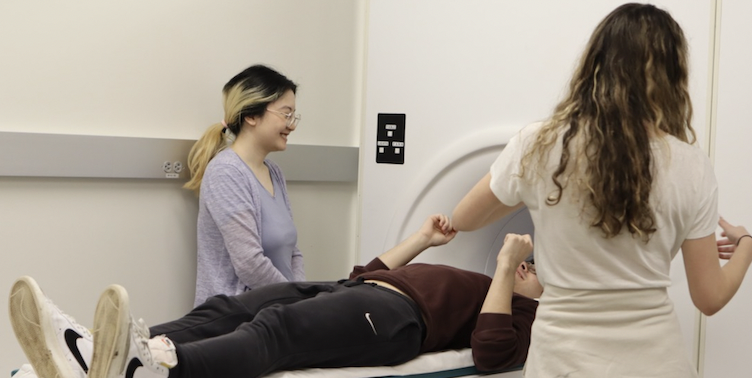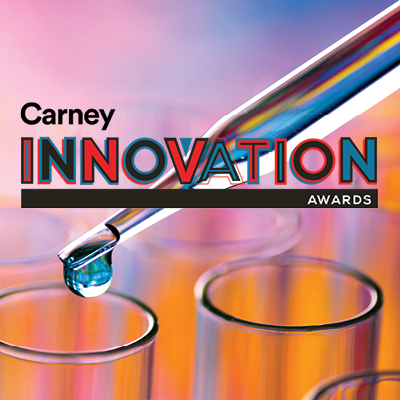Guest Column: Mingling at the Davos of biotech and healthcare

As part of our efforts to foster commercialization of discoveries from our labs, the Carney Institute for Brain Science had a presence in mid-January at the J.P. Morgan Healthcare Conference. The conference, known colloquially as “JPM,” is the place for healthcare-related startups, pharmaceutical companies, and investors to do deals. Meeting at the Westin St. Francis Hotel in San Francisco, select companies make investor presentations to unveil big plans and attract interest. The meeting sessions are notoriously cramped, and many people don’t attend the actual JPM events—you have to be invited and registration is expensive—but everyone who’s anyone is in town because, well, everyone’s in town.
Across the city, firm-to-firm meetings take place informally, and one wonders what deals are being hammered out in hotel lobbies, in coffee shops, on Union Square, and on every floor of Macy’s—anywhere there’s a corner to sit and talk in semi-privacy. In the evening, socials pop up across the city, hosted by law firms and investment houses, where the deal-making and networking continues, fueled by cocktails.
An ancillary event on neuroscience innovation took place on Sunday, January 12. Panels discussed partnering the current status of neuroscience therapeutics, Alzheimer’s, Parkinson’s, rare diseases, and devices. Other panels on early stage innovation discussed how to get more good ideas into the development pipeline.
A frequent topic was hand-wringing over the future of Aducanumab. Aducanumab is a therapeutic jointly developed by Biogen and Eisai, Co., Ltd. for Alzheimer’s; it is a monoclonal antibody that targets aggregated beta-amyloid. Biogen scuttled the program in spring 2019 when trials didn’t demonstrate that the drug was effective. But Biogen announced in October 2019 that after additional analysis, they found that trial participants who received higher dose showed a slowing in cognitive decline. They’ve announced their intention, based on this analysis, to seek FDA approval. On one hand, some are optimistic since there are no existing therapies to slow disease progression, and doctors have provided testimonials about individual subjects in the clinical trial that they believe have benefited.
In a field that has seen disappointment after disappointment, approval of Aducanumab would provide a glimmer of hope. But the question is whether Biogen has uncovered a real, meaningful effect. After years of fruitless focus on beta-amyloid, investors and those in the pharmaceutical industry mentioned the need to tackle other pathways.
However, FDA waving Aducanumab could shift attention back to beta-amyloid and discourage startups tackling other pathways. And approval could complicate future trials, since any new drug would have to be compared to Aducanumab. If FDA denies Biogen’s request for approval, investors could become gun-shy about Alzheimer’s therapeutics. They could also turn even more attention to startups tackling other pathways and shift—rather than limit—investments.
There were no answers of course, and everyone will know better once an FDA decision is delivered—but clearly everyone is watching and waiting.
Other themes included the promise of taking a rare disease approach and bringing successful strategies from cancer to nervous system disorders, using genetics to subtype disease and developing more focused therapies, as has become common in cancer. Pharmaceutical representatives emphasized it’s better to move therapy forward that really works, even if the target population is small, than to target a common disease with a big market, but fail at generating an effective new therapy.
Others mentioned the recent success of antisense therapy for spinal muscular atrophy, which should whet investor and industry appetites for applying that approach to other single-gene diseases.
Furthermore, the high cost of drugs was a frequent topic, and these more targeted therapies are proving expensive. It’s difficult to square the productive strategy of targeting individual genes with the practical challenge of making drugs affordable. Panelists mentioned the need to address the following questions: Who will pay, and how much will they bear early in the development process? Why invest in developing the therapy if no one will cover the cost?
Drug cost was a broader theme, too. Alexis Borisy, a Boston-based investor and company founder, announced a new venture, EQRx, that has already attracted $200 million in investment. He claims that the startup will develop drugs in a more efficient way, and sell them to hospitals and insurers for less. EQRx is aiming to have its first drug in five years, and 10 drugs in a decade. Without details, it’s hard to understand how their strategy will be any different than existing drug development approaches. But it can’t hurt for firms to be addressing the question of drug costs as a marquis component of their branding.
I used JPM as an opportunity to meet with startups, pharmaceutical companies, academic program leaders, and investors who have an interest in partnering with academic researchers to look for opportunities. While we are at the formative stages of developing our programs, the event was a great opportunity to help put Carney on the map as a place interested in getting our discoveries out of the journals and into ventures where they can better society.
What’s the opportunity for Carney? Brain health remains a huge frontier despite challenges, and everyone has their eye on things that could actually make a difference. Brain health bridges traditional therapeutics, devices, diagnostics, artificial intelligence, consumer health technology, and there is plenty of investment in brain and nervous system disorders—unprecedented investment, according to Harry Tracy of NI Research. Good ideas coming out of academia have huge opportunities and avenues for moving towards impact.
R. John Davenport, Ph.D., is managing director of the Robert J. and Nancy D. Carney Institute for Brain Science.



